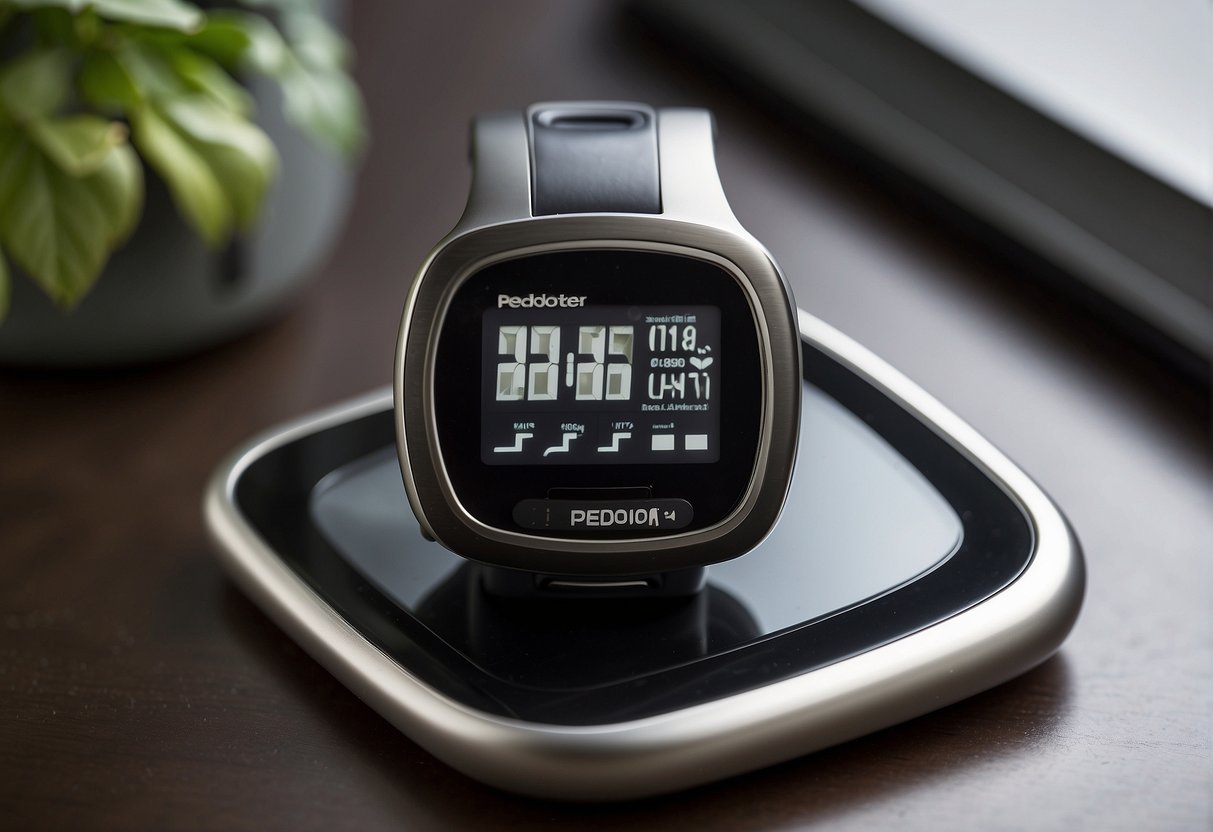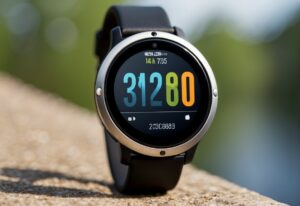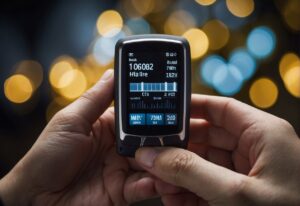Pedometers with heart rate monitors have become vital tools for fitness enthusiasts and health-conscious individuals. These devices not only track the number of steps taken but also monitor the heart rate, providing a comprehensive overview of one’s physical activities and overall cardiovascular health.
Recent advancements in technology have further enhanced pedometers with additional features that track various health metrics such as distance traveled, calories burned, and even quality of sleep. This innovation has made it possible for users to obtain a deeper understanding of their fitness progress and well-being.
Fitness trackers have evolved into personal health companions, guiding users through their daily activities and workout sessions with precision and personalized insight.
Key Takeaways
- Pedometers with heart rate monitors are multifunctional fitness tools that provide extensive health data.
- The integration of advanced features has transformed pedometers into comprehensive health devices.
- Accurate heart rate monitoring in pedometers helps customize exercise routines for optimal benefits.
Essential Features of Pedometers with Heart Rate Monitors
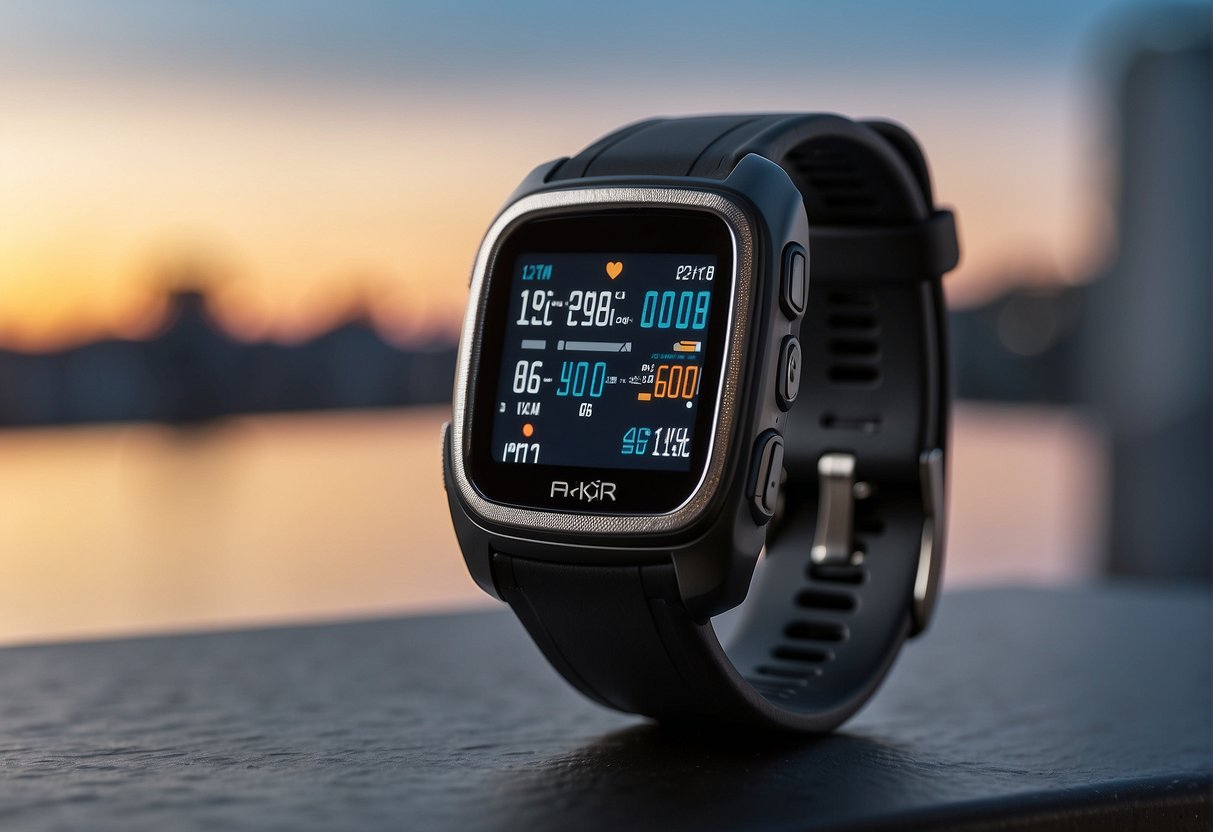
When selecting a pedometer with a heart rate monitor, it is crucial to consider features that optimize performance and convenience for fitness monitoring.
These devices vary in aspects such as accuracy, battery life, and comfort, each vital for achieving fitness goals effectively.
Accuracy of Step Counting and Heart Rate Monitoring
An accurate pedometer is pivotal in tracking progress. Look for devices with advanced sensors, such as the Fitbit Inspire 2, which provide precise data on the number of steps taken and heart rate measurements during various activities.
Battery Life and Power Management
Battery longevity in pedometers is a preeminent concern for users. Devices with long battery life or options like replaceable or rechargeable batteries ensure uninterrupted fitness tracking.
Some units, including smartwatches with heart rate monitors, offer extended battery life suitable for regular use.
Design and Comfort
The design and how comfortable the pedometer is to wear are critical.
Options range from wrist-worn devices to those that can be attached to a waistband or pocket. Comfort depends on personal preference, but wrist options like Garmin’s Vivosmart 4 are popular for their unobtrusive nature.
Connectivity and Data Management
Modern devices offer Bluetooth or ANT+ connectivity, enabling them to sync with smartphones or fitness apps.
This feature allows for detailed data management and analysis of fitness metrics over time.
Price and Value for Money
Evaluate the cost relative to the features offered.
Pedometer prices vary widely, from affordable basic models like the 3DFitBud to more expensive multifunctional devices. It is essential to balance functionality with budget constraints.
Additional Health Metrics and Functions
A pedometer may offer additional health metrics such as tracking sleep, calories burned, and stress levels. These functions provide a more comprehensive health assessment, contributing to a holistic approach to wellness.
Ease of Use and User Interface
Selecting a pedometer that is user-friendly guarantees that users can access and interpret their data effectively.
A straightforward user interface promotes regular use and eases the interaction with the device’s features.
Brand Reliability and Customer Reviews
Purchasing from a reputable brand, like Garmin, Fitbit, or Polar, ensures quality and reliability.
Reading customer reviews can provide insight into the user experience and the product’s longevity.
Water Resistance and Durability
Consider pedometers rated water-resistant or waterproof to prevent damage from sweat or weather.
Robustness is essential to withstand the rigors of workouts and daily activities.
Compatibility with Fitness Ecosystems
Compatibility with other devices and apps, particularly in fitness ecosystems, allows for integrated tracking and sharing of fitness data, enhancing the overall experience and functionality of your pedometer.
Targeted Exercise Modes and Tracking
Devices may offer tailored modes for different exercises such as running, cycling, or swimming.
These specialized features ensure that data relevant to specific workouts is accurately recorded and available for review.
Portability and Wearability Options
The option to wear the pedometer on a wrist, pocket, waistband, or via a lanyard influences portability and wearability.
Consider which option best fits your lifestyle and exercise habits for maximum efficacy.
Top Pedometers with Heart Rate Monitors
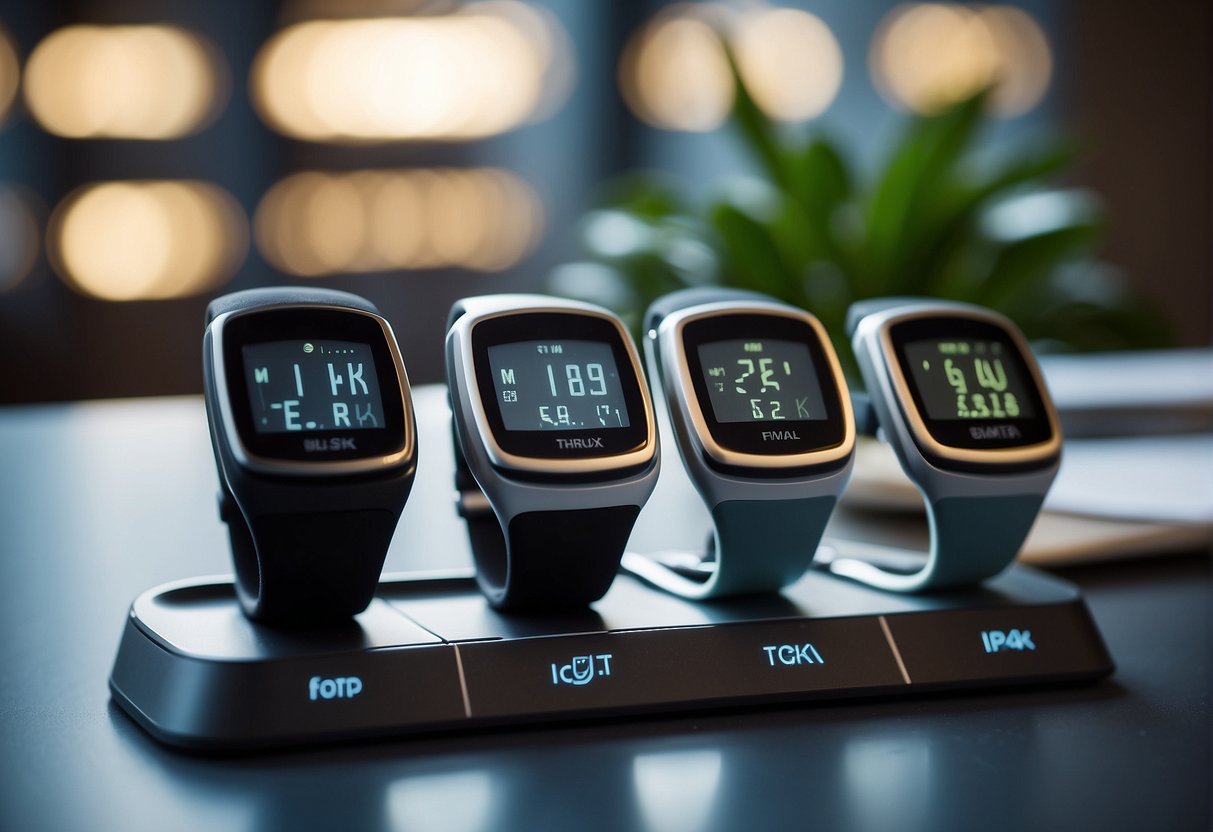
In a market saturated with options, selecting a pedometer with a heart rate monitor is about finding the right balance of features, accuracy, and price. The following subsections list highly regarded devices, each excelling in distinct areas, to aid in the quest for monitoring physical activity and heart rate.
Best Overall Performers
The Garmin Vivosmart 4 excels as a top pick for overall performance with its sleek design, offering not just step tracking but also heart rate monitoring, sleep analysis, and oxygen consumption rates.
Similarly, the Fitbit Charge 4 stands out for its comprehensive health tracking capabilities, combining heart rate monitoring with GPS and SpO2 features for a well-rounded fitness assessment.
Best for Specific Activities
For enthusiasts who focus on specific activities, the Garmin 010-12520-00 Running Dynamics Pod has been cited as the best for running, providing advanced metrics critical for runners’ performance analysis.
Cyclists and swimmers may turn to the Polar H10 Heart Rate Sensor for its versatility and compatibility with various sports apps and equipment.
Best Budget-Friendly Choices
When cost is a concern without sacrificing quality, the 3DFitBud Simple Step Counter earns popularity as a straightforward, affordable device for those primarily interested in step counting.
Meanwhile, for a balance of features and value, the Realalt 3DTriSport Walking 3D Pedometer offers step and activity tracking without breaking the bank.
Best for Accuracy and Precision
Accuracy is crucial in fitness tracking. The Polar H10 Heart Rate Sensor is renowned among experts for its precise heart rate monitoring, a vital feature for athletes looking to train within specific heart rate zones.
The devices by Fitbit often come praised for their overall accuracy across all metrics.
Best for Durability and Battery Life
Durability and long battery life are essential for uninterrupted usage.
Devices like the Garmin Vivosmart 4 and Fitbit Charge 4 have proven reliable in these aspects, with the former noted for its long battery life and the latter for its robust build and replaceable battery option.
Users can engage in prolonged physical activities without worrying about their device’s longevity.
Understanding Heart Rate Data and Health Benefits
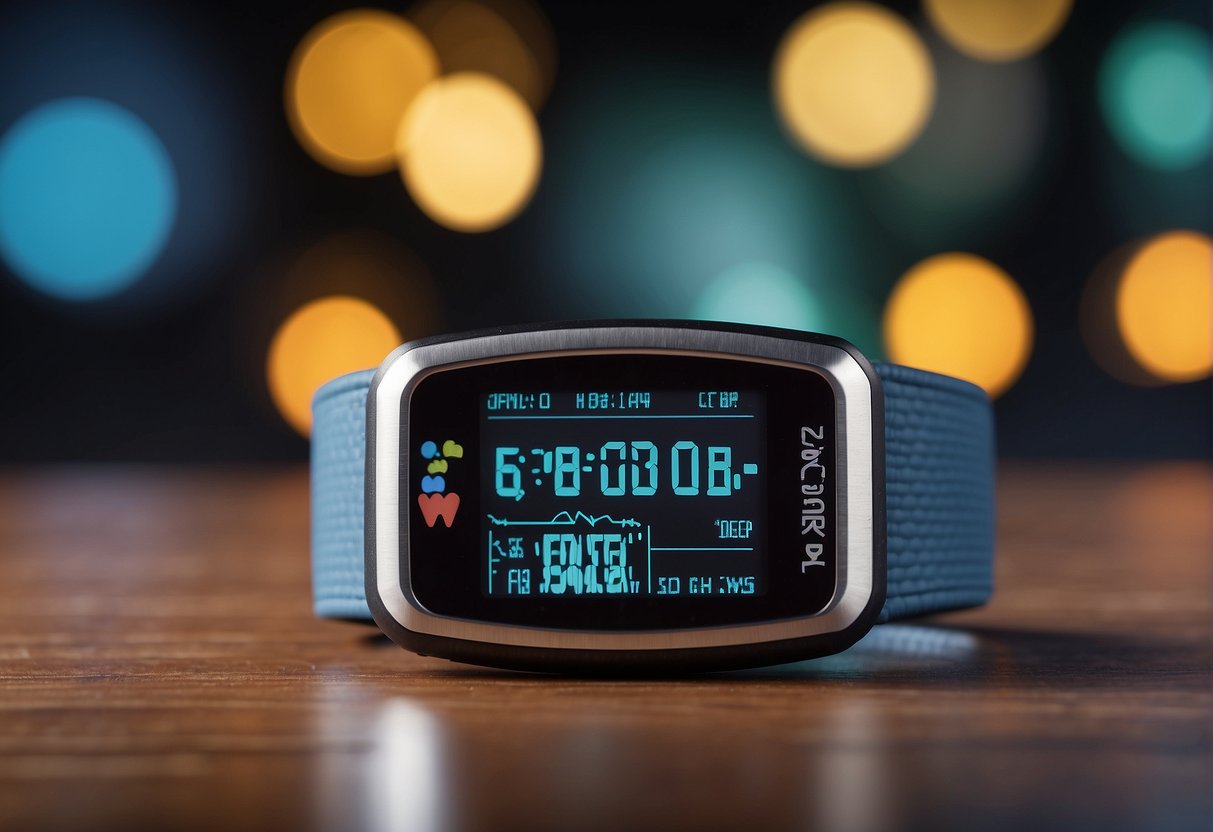
Integrating heart rate data into a fitness routine provides a quantitative measure of effort, recovery, and cardiovascular health. By understanding and utilizing this data, individuals can enhance their workouts, monitor health, and achieve fitness goals more effectively.
Monitoring Heart Rate for Health and Fitness
Tracking heart rate during physical activity helps gauge intensity levels and overall cardiovascular health.
Heart rate monitoring serves as a valuable tool, indicating whether one should increase the intensity for fitness improvement or slow down to avoid overexertion.
Regular monitoring can also reveal patterns related to stress or sleep quality, offering insights into overall well-being.
Maximizing Your Workout with Heart Rate Zones
Heart rate zones are specific ranges of heart rate that correspond to various exercise intensities.
By exercising within different zones, you can focus on improving cardiovascular endurance, burning fat, or building strength.
For example, staying in the so-called “fat-burning zone” typically requires maintaining a heart rate at 60-70% of your maximum, which can be effectively tracked with a pedometer with heart rate capabilities during running or cycling.
The Importance of Sleep and Recovery Tracking
Quality sleep and adequate recovery are crucial for health and fitness progress.
Sleep tracking, through devices integrated with heart rate monitors, can provide valuable data on sleep patterns and heart rate variability (HRV).
An increased HRV can be a sign of good cardiovascular health and recovery, while lower HRV may indicate stress or fatigue.
Maintaining Progress and Setting Goals
Setting achievable fitness goals and monitoring daily steps or distance traveled can maintain motivation and facilitate progress.
Modern fitness trackers not only count steps but also provide detailed information on heart rate data during workouts, helping users adjust their efforts to match their goals.
Whether the aim is to increase daily steps, improve running endurance, or manage blood pressure, utilizing heart rate data can provide a clear path to success.
Technical Considerations and Innovation in Pedometers
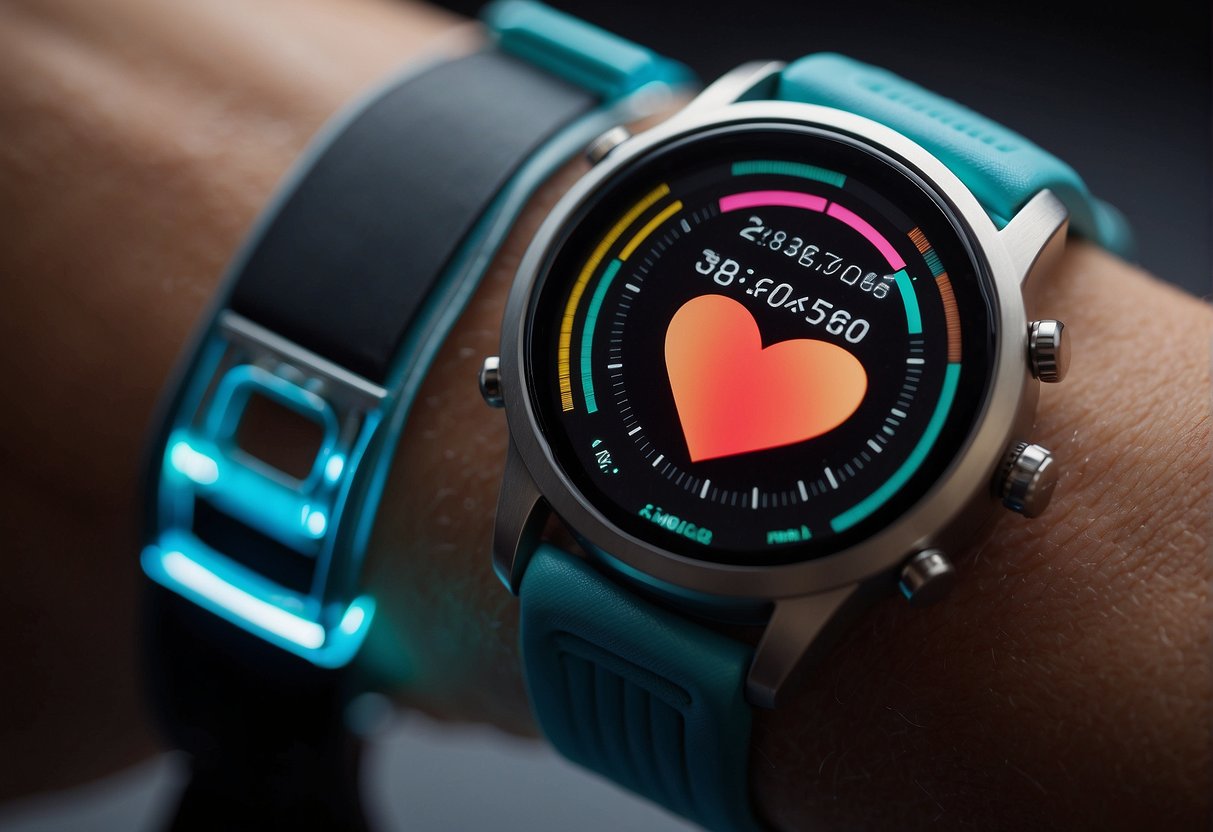
Pedometers with heart rate monitors have evolved considerably, integrating advanced sensor technologies and innovative features to create devices that offer accurate health data and enhanced user experience.
Exploring Different Sensor Technologies
Pedometers now employ various sensor technologies to collect data.
Optical sensors are often used in wrist-worn devices for monitoring heart rate, while chest straps typically use electrical sensors for greater accuracy.
Some sophisticated pedometers also combine gyroscopes and accelerometers to track cadence and steps more precisely.
GPS Capabilities and Navigation Features
The integration of GPS navigation features into pedometers has boosted their functionality, offering users the ability not only to track their steps but also to map their routes.
Devices with built-in GPS provide the added benefit of precise location tracking without the need for a smartphone connection.
Battery Technologies and Energy Efficiency
Battery life is a critical factor in the usability of pedometers.
Long battery life is now a common feature, with options for both rechargeable and replaceable batteries.
Innovations in energy efficiency ensure that devices can last for extended periods, making them more convenient for continuous health monitoring.
Innovations in Comfort and Wearability
The comfort and wearability of pedometers have greatly improved.
Devices are available in various forms, including wristbands, waistband clips, and lanyards.
Modern designs prioritize a comfortable fit and discreet presence, making them comfortable to wear throughout the day and night.
The Future of Pedometer Technology
Looking ahead, pedometer technology is poised for further innovation.
Anticipated advancements include even more reliable Bluetooth and ANT+ connectivity for seamless data syncing.
In addition, the development of the best smartwatch alternatives is expected. These alternatives will emphasize a blend of extra features and comfort.
Fitness enthusiasts can expect future devices to intelligently combine accurate tracking with user-friendly designs that fit effortlessly into their active lifestyles.

